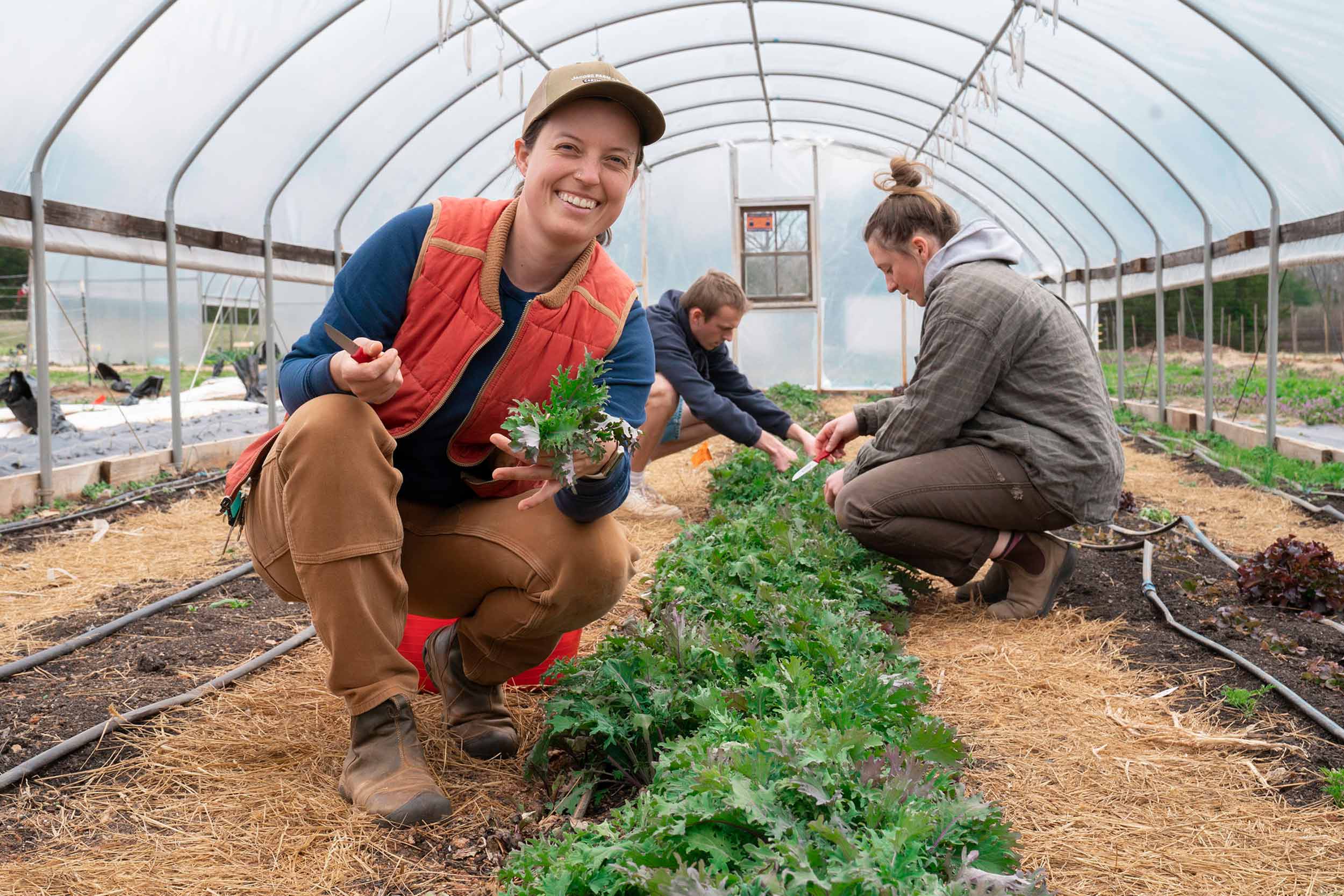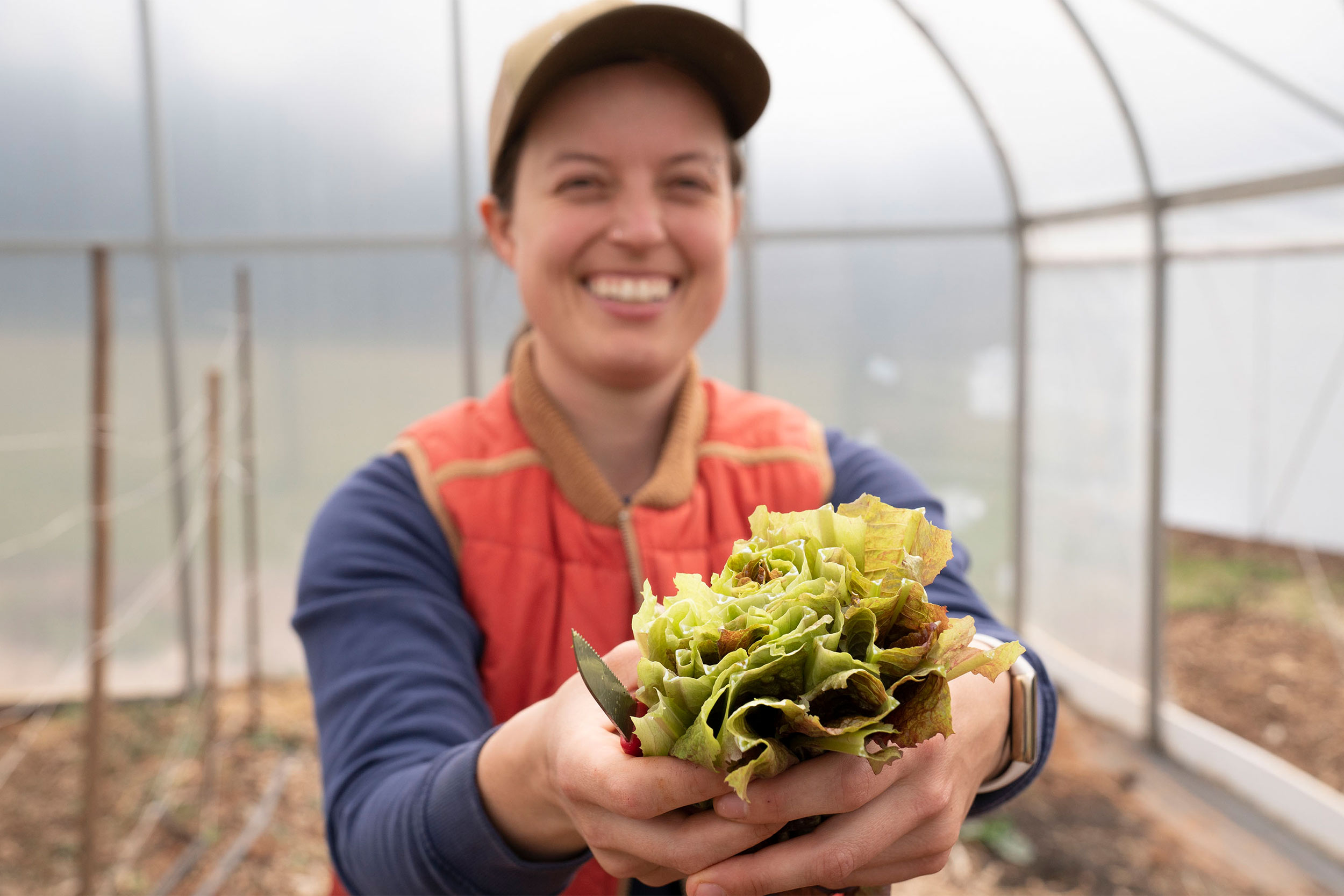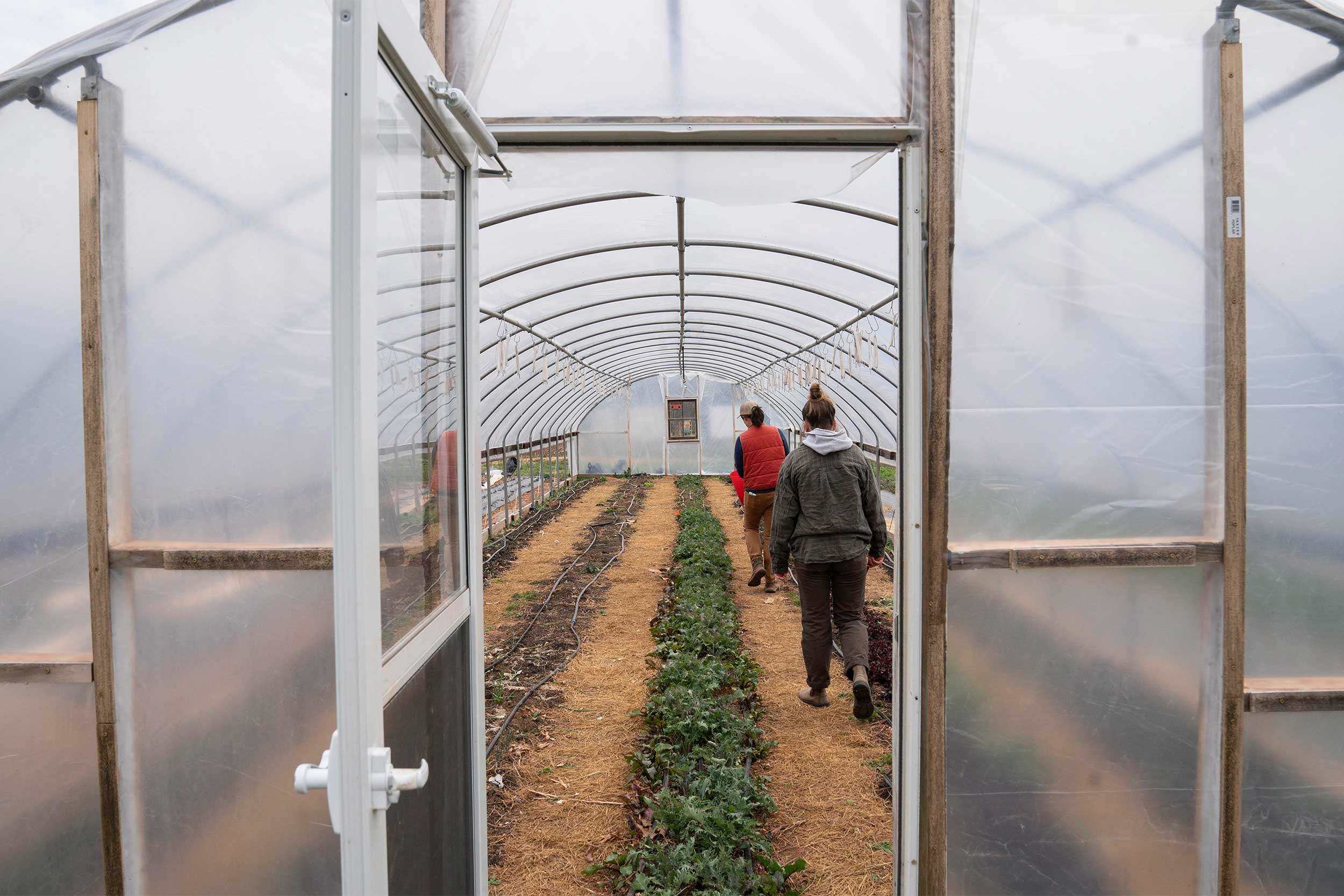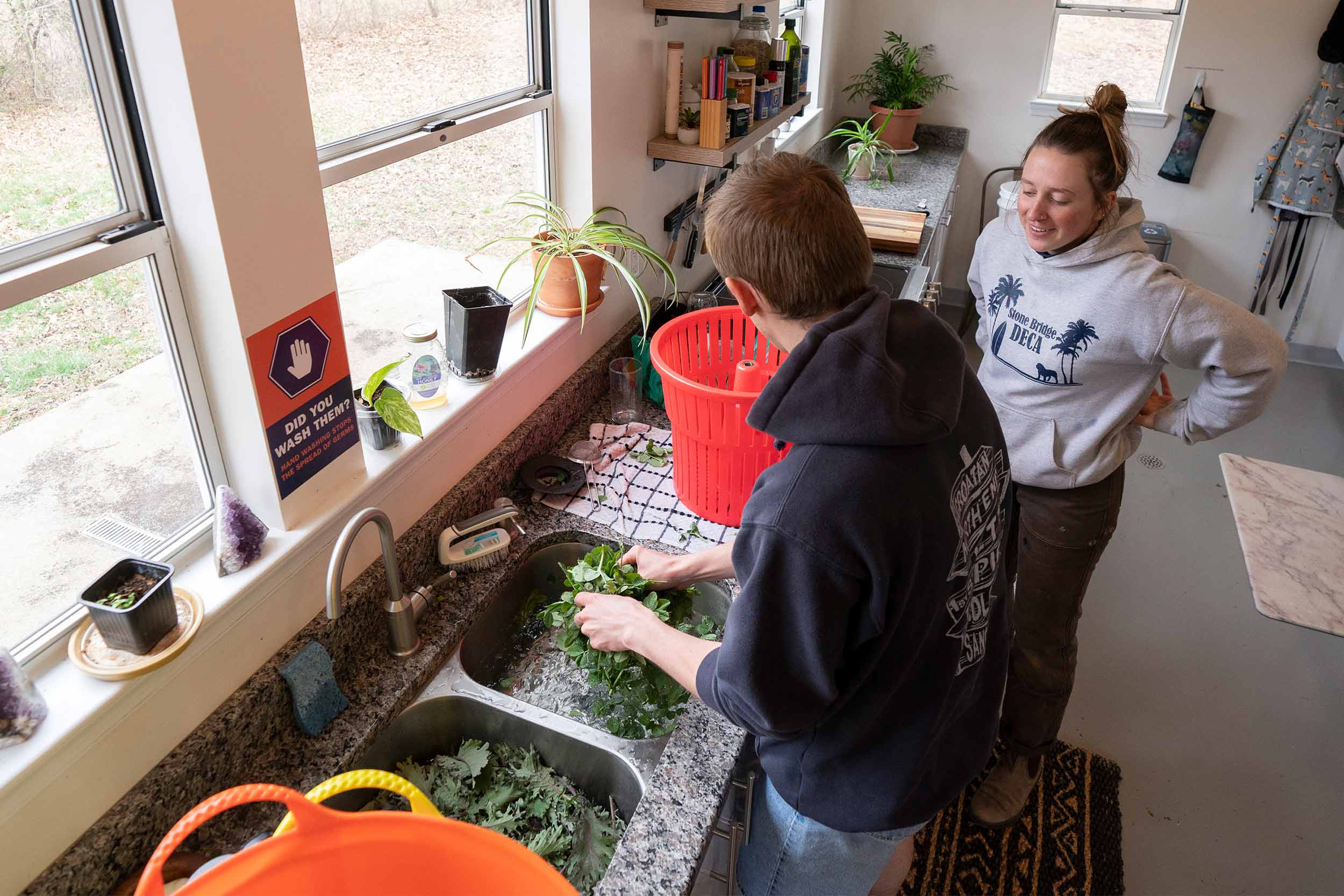From their lanes under the grow shelter, kale and lettuce fan up from the soil. Outside, Egyptian walking onions stretch their legs. Industrious bees from the cultivated hive nearby explore dead nettle, the ground cover of choice here. Happy clusters of daffodils look on.
Signs of spring are everywhere at the Morven Kitchen Garden farm, the 1.25-acre plot that the UVA Morven Sustainability Lab uses for teaching, and to some extent, feeding, UVA students and community members.
The plants growing at Morven, though, got their start over the winter. So what should this year’s would-be gardeners be thinking about now? UVA Today asked Fiona Flynn, the kitchen garden coordinator, for her best advice about getting started, or getting better at, making those incredible edibles grow.
Even on the small scale, agriculture can be aggravating. Weather, water, soil and sun all have to come together just right. And it’s not just newbies who make mistakes.
“Everybody does,” Flynn said. “I still experience crop failures every single year, multiple times a year. So don’t feel bad about that. It’s just try, try again.”
When one of Flynn’s student interns, economics and public policy major Jayna Mallon, began learning at the garden last spring, she didn’t know purple spinach from beets. These days, her thumb is much greener. She even gardens at home, too.
“It’s about being experimental with stuff and resilient, because sometimes you try something and it just doesn’t work,” Mallon said.
So now that you know it’s OK to fail, here are six tips Flynn says can help as you strive for gardening greatness.








